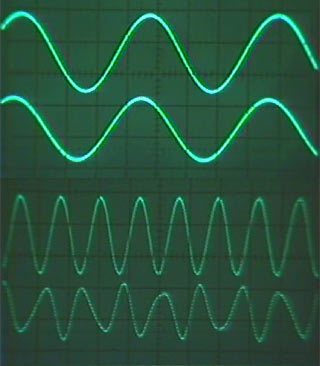
Demonstration of the effects of sampling and aliasing for sinusoidal frequencies. Beginning at half the sampling frequency, the output sinusoidal frequency will decrease despite an increasing input frequency. These topics are covered in lecture 14 and the demonstration videos.
Resource Description
Resource Features
Course Description
This course was developed in 1987 by the MIT Center for Advanced Engineering Studies. It was designed as a distance-education course for engineers and scientists in the workplace.
Advances in integrated circuit technology have had a major impact on the technical areas to which digital signal processing techniques and hardware are being applied. A thorough understanding of digital signal processing fundamentals and techniques is essential for anyone whose work is concerned with signal processing applications.
Digital Signal Processing begins with a discussion of the analysis and representation of discrete-time signal systems, including discrete-time convolution, difference equations, the z-transform, and the discrete-time Fourier transform. Emphasis is placed on the similarities and distinctions between discrete-time. The course proceeds to cover digital network and nonrecursive (finite impulse response) digital filters. Digital Signal Processing concludes with digital filter design and a discussion of the fast Fourier transform algorithm for computation of the discrete Fourier transform.



